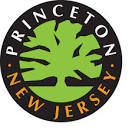Aiming to celebrate Princeton’s earliest inhabitants – who were not European settlers – Mayor Liz Lempert and Princeton Council have designated the second Monday in October as Indigenous Peoples Day.
Princeton joins Newark as the second town in New Jersey to do so. Many towns and some states have already adopted the second Monday in October, which this year is Oct. 14, as Indigenous Peoples Day. It coincides with Columbus Day, which is a federal holiday but one that is not celebrated in Princeton.
The resolution was prepared by the Princeton Civil Rights Commission’s ad-hoc committee on the topic, said Kim Dorman. She serves on the Civil Rights Commission and chaired the ad-hoc committee, which included community members.
“There was interest from a number of members of the community, including Daniel Harris and Patricia Soll, to have an Indigenous Peoples Day resolution, as well as various efforts throughout the town to raise awareness around indigenous issues,” Dorman said.
Before the arrival of European settlers in the 1600’s, Princeton – and New Jersey – was the home of the Nanticoke Lenni Lenape Tribal Nation, the Powhatan Renape Nation and the Ramapough Lenape Nation. They are the indigenous people.
Meanwhile, the resolution adopted by Princeton Council encourages “other institutions to recognize the day and reaffirm the municipality’s commitment to promote the well-being and growth of indigenous communities.”
“The Municipality of Princeton supports the formal institution of Indigenous Peoples Day to provide impetus for developing educational opportunities to explore and celebrate the thriving cultures and values of the indigenous peoples in our region and beyond,” the resolution states.
Through the resolution, the town “encourages all businesses, organizations and public institutions to recognize Indigenous Peoples Day.” It acknowledges the indigenous peoples’ longtime stewardship of the land that is now Princeton and New Jersey, and their continued presence here.
By adopting the resolution, “Princeton seeks to join a growing number of other states and communities across the United States that currently honor the lives of tribal peoples, including their cultures, traditions and arts,” the resolution states.
“The resolution is a town-wide way of saying, annually, this is something that we recognize,” Dorman said.
“We will need to continue to hold ourselves to the words in the resolution, and with intention, to work towards making it a ‘lived reality’ for all,” Dorman said.

